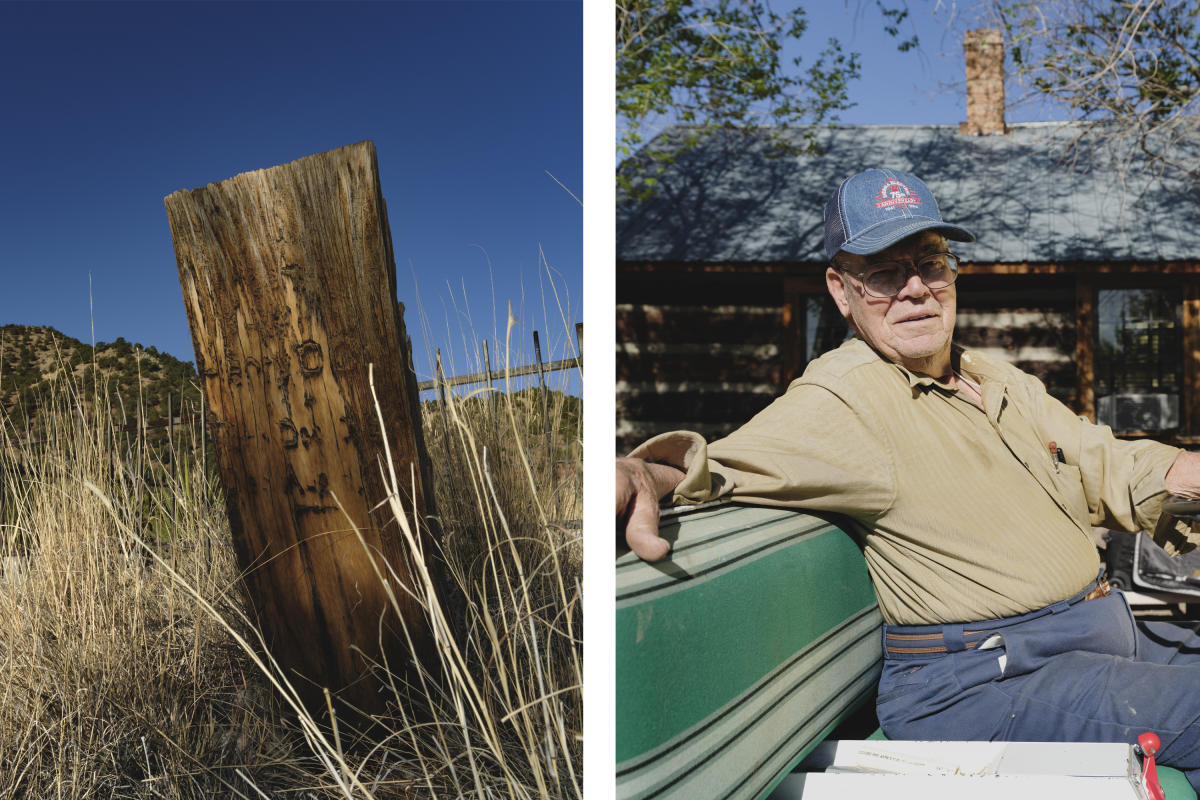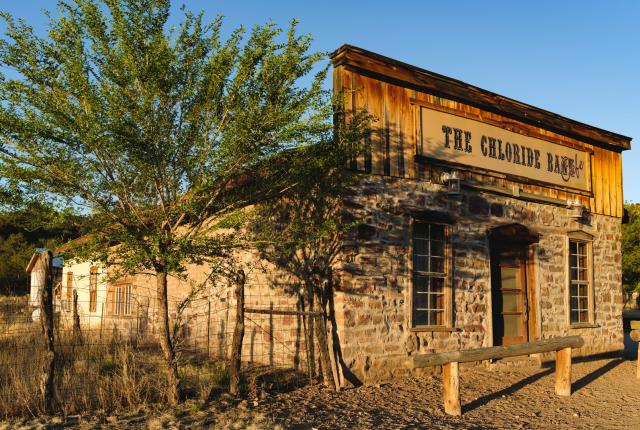Visitors to Chloride can see former mining buildings.
HAD DON EDMUND NOT TAKEN A WRONG TURN on Labor Day weekend in 1977, the town of Chloride might have fallen faster. Instead, Edmund fell for the onetime silver-mining boomtown 40 miles northwest of Truth or Consequences, moved there in 1986, and, along with other residents, began rescuing buildings and collecting stories from the locals. Eventually joined by his daughter, Linda Turner, he helped turn this wee dot on the map into a historical treasure.
The town dates to a silver strike in 1879 by Harry Pye, who was killed by Apaches before he could reap his reward. Others did their best to get a piece of Pye’s, uh, pie. Some 3,000 people crowded into the almost overnight town. The population swelled into nearby Winston and Cuchillo, while other strikes in the Black Range fueled the towns of Lake Valley, Hillsboro, and Kingston. Churches and schools sprouted throughout the region, along with newspapers, banks, cabinetmakers, tailors, doctors, hotels, and a brothel or two. (Dozens of brothels if you believe some of the hype.) For certain, Chloride had a hanging tree, a live oak that stands today.
The town also had an ore crusher and smelter to serve the 480 claims that turned into 42 working mines. In 1896, President William McKinley embraced the gold standard and halted the purchase of silver for coinage. Prices plummeted, mines closed, and towns went bust.
In 1923, the proprietor of Chloride’s Pioneer Store, which sold everything from cast-iron frying pans to canned goods, pickaxes, and saddles, locked it up and walked away, leaving it fully stocked. “We had to shovel out the bat guano and rat droppings,” Turner says, but now the building gleams as a period-perfect museum. “More than a few visitors say they feel like they stepped back in time 100 years, and most people say, ‘It’s a wonderful collection.’ ” But she collected nothing. It was all right there. “I have to respond, ‘It’s not a collection.’ ”
Thursdays through Mondays, 10 a.m. to 4 p.m., visitors can marvel in the museum and wander into the Grafton Cabin, a two-story log building, as well as the Monte Cristo, a onetime saloon that houses a gift shop with works by local artisans. You can stay a night or two in the RV park or rent one of the historic but modernized cabins.
 A frontier cemetery can be found in Chloride (left), and you might just meet author and preservationist Don Edmund (right).
A frontier cemetery can be found in Chloride (left), and you might just meet author and preservationist Don Edmund (right).
When Edmund moved in, just 13 people remained. Most could spin a good yarn about the old days, and those fill his book, Stories They Told Us, and another by longtime resident Raymond Schmidt, New Mexico Recollections, both available at the Monte Cristo.
These days, Turner hopes to renovate the onetime home of Cassie Hobbs, “a true pioneer woman.”
“Until she turned 14, she hadn’t lived in anything but tents and covered wagons,” Turner says. “She married at 16 and settled in Chloride in the 1940s. We have a houseful of furniture and art that was made by Cassie, along with clothes made by her. It’s amazing the things she did with a few simple tools.”
The pandemic slowed Turner’s construction schedule and helped scuttle a café that operated in another historic building. (Take the hint, should you happen to possess culinary acumen, an entrepreneurial spark, and a hankering for life lived slowly.)
“Chloride is this quaint little ghost town,” Turner says. “A lot of the buildings have been restored, it’s the entrance to the Gila National Forest, and there are dark skies. We frequently see deer right here in town, even in the middle of the day. Some visitors are really interested in the history, some are particularly interested in mining, and some just come for the peace and quiet.”

PLUS: These three former mining towns deliver unique rewards.
Read More: The Historic Fairview Cemetery tells stories of wealth, power, tragedy, and anonymity.
Read More: This once booming mining town is now a bustling artistic village.


